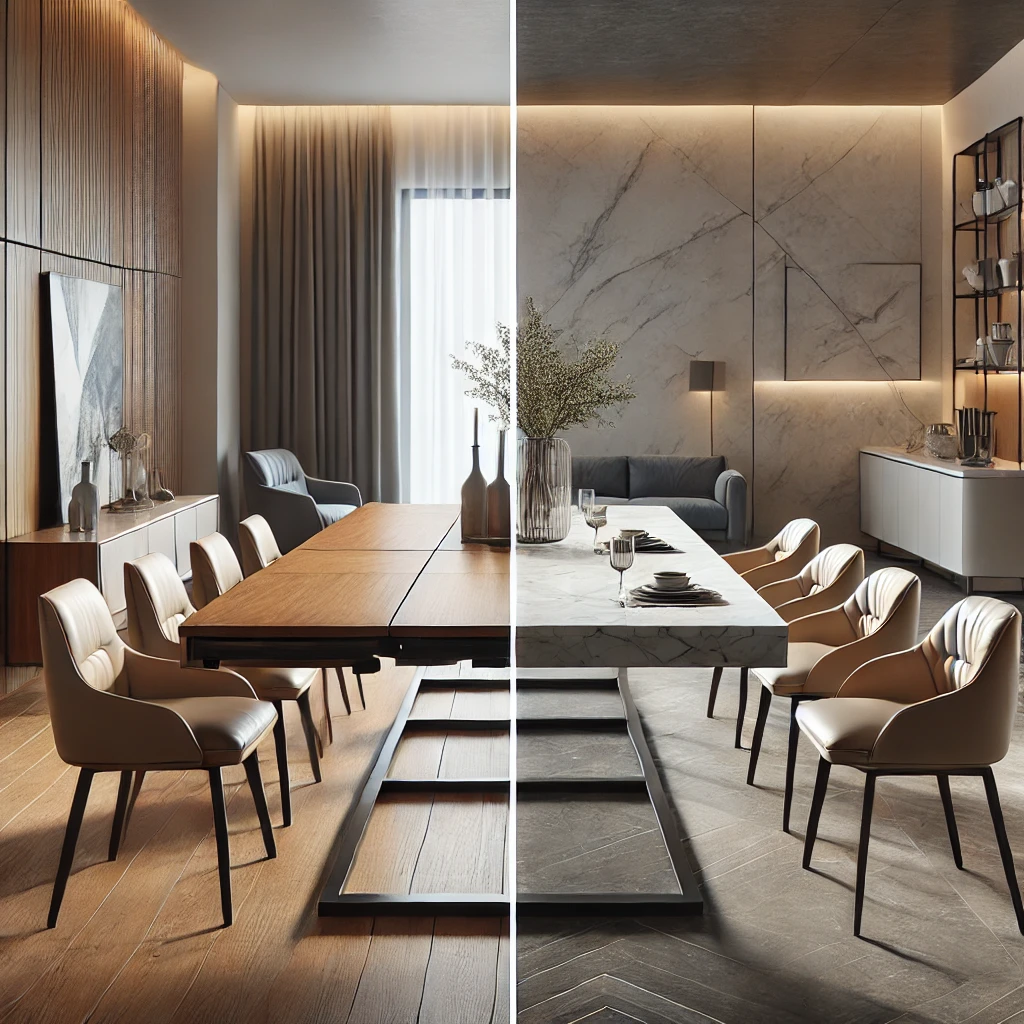
Selecting the ideal dining table involves evaluating various factors, including size, functionality, and aesthetics. A primary consideration is choosing between an extendable dining table and a fixed dining table. Each option offers distinct advantages and potential drawbacks. This guide aims to assist you in making an informed decision that aligns with your lifestyle and space requirements.
Pros:
-
Flexibility: Extendable tables can be adjusted to accommodate varying numbers of guests, making them suitable for both daily use and special gatherings.
-
Space Efficiency: When not extended, these tables occupy less space, which is advantageous for smaller dining areas.
-
Versatility: Available in various styles and sizes, extendable tables can complement diverse interior designs.
Cons:
-
Maintenance: Extendable tables may require more upkeep, such as regular oiling or polishing, to maintain their appearance and functionality.
-
Storage of Extensions: Some designs necessitate separate storage for extension leaves, which could be cumbersome if storage space is limited.
-
Cost: High-quality extendable tables, especially those made from premium materials like hardwood, can be more expensive than fixed tables.
Fixed Dining Tables
Pros:
-
Stability: Fixed tables often have a more robust construction, providing consistent stability without movable parts.
-
Design Variety: A wider range of designs and styles are available, allowing for greater customization to match your décor.
-
Lower Maintenance: With no moving components, fixed tables typically require less upkeep over time.
Cons:
-
Limited Seating Capacity: The number of seats is fixed, which may be restrictive during larger gatherings.
-
Space Considerations: A larger fixed table can occupy significant space, potentially overwhelming smaller dining areas.
Making Your Decision
When choosing between an extendable and a fixed dining table, consider the following:
-
Usage Patterns: If you frequently host guests or anticipate varying seating needs, an extendable table offers adaptability.
-
Available Space: For compact dining areas, an extendable table provides flexibility without permanently occupying extra space.
-
Budget: Assess your budget, keeping in mind that while extendable tables may have a higher initial cost, their versatility could offer better long-term value.
-
Aesthetic Preferences: Determine which table style aligns best with your interior design and personal taste.
By carefully evaluating these factors, you can select a dining table that meets your functional needs and enhances your dining space’s aesthetic appeal.